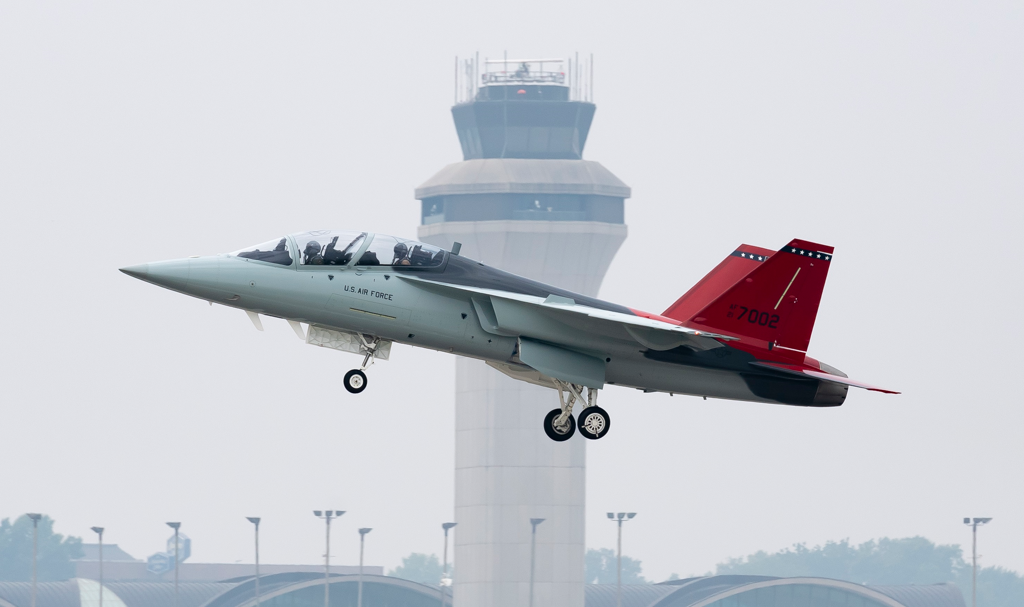
A U.S. Air Force T-7A takes off from Boeing’s St. Louis facility on June 28.
Credit: Boeing
The U.S. Air Force on June 28 flew its next-generation trainer for the first time, marking the start of the engineering and manufacturing development (EMD) phase of the T-7A Red Hawk. The first EMD aircraft for the service took off from Boeing’s St. Louis facility. It was piloted by a uniformed Air...
Subscription Required
This content requires a subscription to one of the Aviation Week Intelligence Network (AWIN) bundles.
Schedule a demo today to find out how you can access this content and similar content related to your area of the global aviation industry.
Already an AWIN subscriber? Login
Did you know? Aviation Week has won top honors multiple times in the Jesse H. Neal National Business Journalism Awards, the business-to-business media equivalent of the Pulitzer Prizes.





